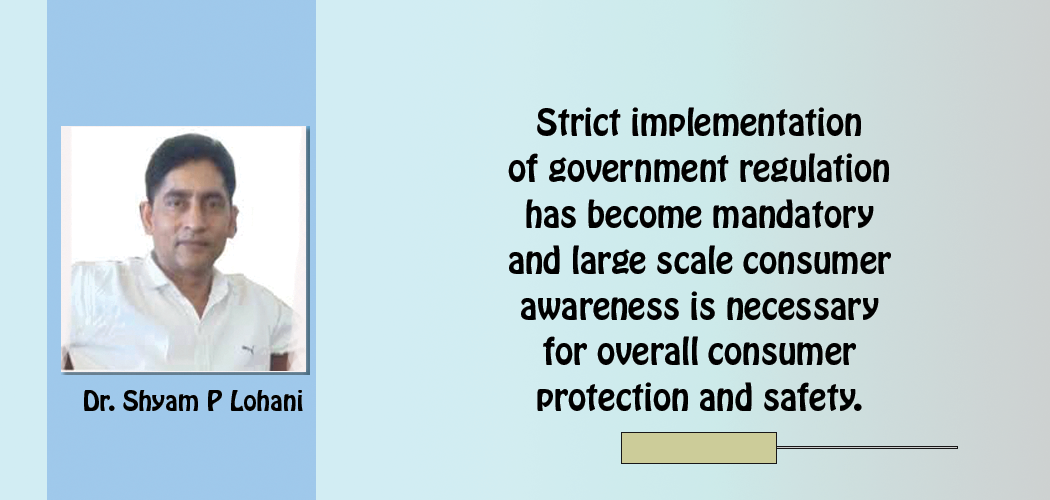- Saturday, 5 July 2025
Regulate Cosmetic Products
Cosmetics are used to enhance external look and beauty. External appearance is important in everyone’s life especially during social interactions. External appearance helps to maintain social values and status, uplift self-confidence and provide competitive edge in social interactions. Facial attractiveness is the most significant predictor of overall physical attractiveness. The majority of women and good segment of men, mainly in urban areas, use facial cosmetics to enhance attractiveness. Almost all of us want to look good and feel good, and we use cosmetics to achieve this.
Since prehistoric times, people used body paint for ornamental and religious purposes. Beginning of the 19th century marked the scientific development of cosmetics. Such products then started to be used for treatment of many skin diseases. It is also used for the prevention and elimination of skin defects on the face, neck, scalp, arms, and legs.
Beauty industry
Global cosmetic products market was valued at around US$ 532 billion in 2017 and is expected to reach about US$ 863 billion in 2024. Skincare is the biggest segment in the beauty industry and has crossed $130 billion in 2019. Lipstick market size was US$ 56 billion in 2017 and is expected to reach US$ 86 billion by the end of 2022.
According to the Nepal Rastra Bank (NRB), Nepal imported cosmetic products worth Rs 4.36 billion in 2016/17 and Rs 3.65 billion in 2015/16, while cosmetic products worth Rs 3.24 billion had entered the country in 2014/15. It has been estimated that Nepalis use cosmetics worth about Rs 5.5 billion annually.
There are thousands of cosmetics available in the market. These products ranges from lipstick and nail polish to deodorant, hairspray, shampoo, shower gel, perfume, hair adhesives, hair removal products, hair dyes, soaps, tooth whiteners, and cleansing wipes. Cosmetics are preparations externally applied to change or enhance the beauty of skin, hair, nails, lips, and eyes.
Ointments, balms, powders, and hair dyes have also been used since ancient times. Cosmetics preparations are repeatedly applied directly to the human skin, mucous membranes, hair and nails. So, they should be safe for health. However, recently there has been increasing concern about the safety of cosmetics and risk to human health. Cosmetic products, thus, should not alter the physiological functioning of the skin and body.
Cosmetic-grade colour additives, either inorganic pigments or organic dyes and pigments should be safe for use on humans and do not contain heavy metals such as lead, cadmium, and chromium. The inorganic pigments include iron oxide, manganese, chromium oxide, titanium dioxide, and ferric ferrocyanide.
Numerous studies in many countries revealed that heavy metals like lead, arsenic, mercury, aluminum, zinc, chromium and iron are found in a wide variety of personal care products, including lipstick, whitening toothpaste, eyeliner and nail colour. In cosmetics, some metals are intentionally added as ingredients, while others are contaminants. Excessive accumulation and thus exposure to metals has been linked to health concerns, including toxicity ranging from reproductive, immune to nervous system.
Heavy metals such as lead, mercury, cadmium, arsenic and nickel, have been found in excessive amounts in various types of cosmetics such as face and body care products, hair cosmetics, and even in herbal cosmetics. Metals in cosmetics may be retained on the skin and act directly in the skin or be absorbed through the skin into the blood, accumulate in the body and exert toxic effects on various organs of the body.
The processing has changed from a small scale production to industrial large scale production for a wider consumer population with the ever-increasing use of worldwide advertising and social media. However, whereas topical medicinal products are meticulously scrutinised before marketing, cosmetics do not undergo rigorous testing as compared to topical medicinal praparations. Nevertheless, for cosmetic products, the manufacturers, distributors and importers are primarily responsible for the safety of their marketed products.
Standards
Many international regulatory agencies such as the USA’s Federal Drug Administration (FDA) issued limits on As (5 ppm), Pb (5 ppm) and other heavy metals (20 ppm). The World Health Organisation (WHO) has set limits for Pb (10 ppm), Cd (0.3 ppm) and Hg (1 ppm). The Nepal Standards-2019 for cosmetics was developed for all imported, domestically produced, sale, distribution and uses of cosmetics in the country.
Nepal recommends limit for lead (10 ppm), mercury (1 ppm), arsenic (3 ppm) and cadmium (3 ppm) in skin cream and lotion and lead (10 ppm), cadmium (3 ppm), mercury (1 ppm) and arsenic (3 ppm) for lipstick. Poisonous heavy metals and other numerous chemicals added or contaminated in the manufacturing process ultimately ingested or get absorbed through the skin and bio-accumulated in human body and when toxic level is reached cause detrimental effects to the body. Consumers lack awareness about the toxic effects of those metals on their health. Therefore, strict implementation of government regulation has become mandatory and large scale consumer awareness is necessary for overall consumer protection and safety.
(Dr. Lohani is the clinical director at the Nepal Drug and Poison Information Centre. lohanis@gmail.com)
















